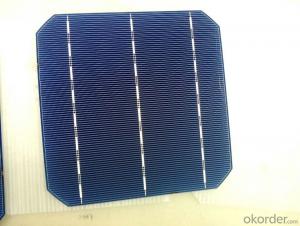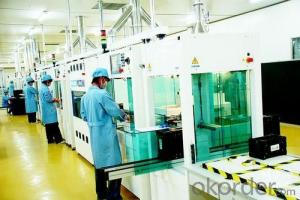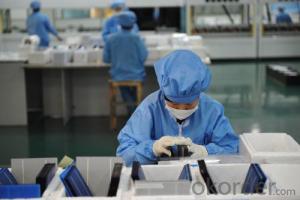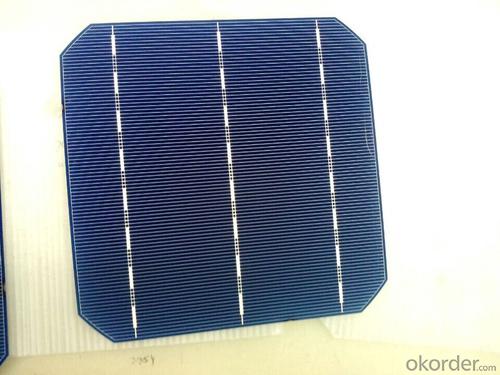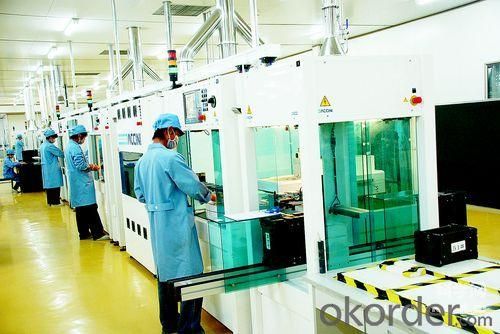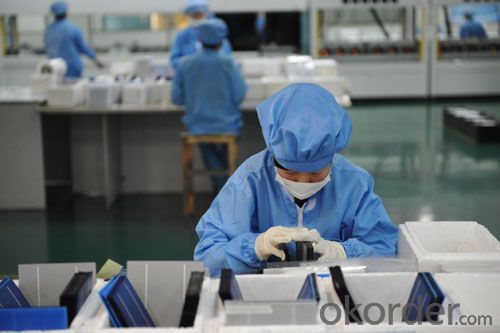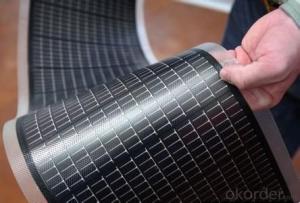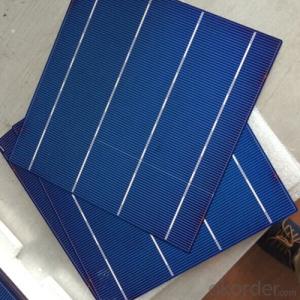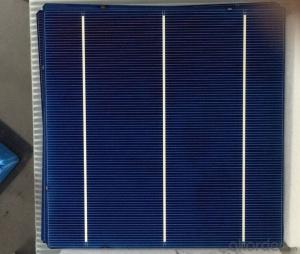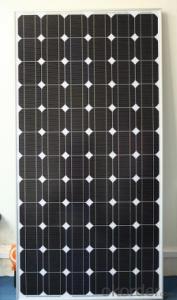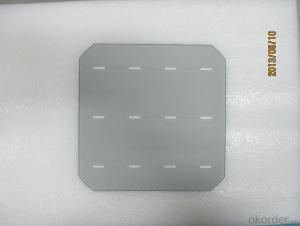Stackable Solar Cells - 156*156mm Monocrystal Solar Cell with 4.65 Watt High Efficiency
- Loading Port:
- Shanghai
- Payment Terms:
- TT or LC
- Min Order Qty:
- 1000 pc
- Supply Capability:
- 20000000 pc/month
OKorder Service Pledge
OKorder Financial Service
You Might Also Like
Brief Introduction of Solar Cells
A solar cell, is an electrical device that converts the energy of light directly into electricity by the photovoltaic effect, which is a physical and chemical phenomenon. It is a form of photoelectric cell, defined as a device whose electrical characteristics, such as current, voltage, or resistance, vary when exposed to light. Solar cells are the building blocks of photovoltaic modules, otherwise known as solar panels.
Monocrystal solar energy cell
Type:156M
Appearance:156×1565㎜±0.5mm; Diagonal:R=100mm
Main fence wide:1.4-1.5mm Back electrode wide:2-2.5mm
Fence line qty:90
Cell thickness:220um±20um
Eff(%) | 19.0- 19.1 | 19.1- 19.2 | ||||||||||
Pm(W) | 4.54 | 4.56 | ||||||||||
Isc(A) | 8.9 | 8.93 | ||||||||||
Im(A) | 8.47 | 8.51 | ||||||||||
Voc(V) | 0.638 | 0.64 | ||||||||||
Vm(V) | 0.537 | 0.538 | ||||||||||
FF(%) | 80 | 80 |

remark:our company cells as per working current concentrate principle,separate the first and the second grade
Advantage of Polycrystalline Solar Cells
World’s Leading Manufacturer Equipment. We imported the newest and leading production equipment from abroad. Advanced equipment can guarantee the stable quality of cells. Auto production line can also save labor cost which will further cut our production cost.
Bulk supply: With the production capacity of 500MW, we can produce large quantity every month. This can satisfy most customer requirement.
Factory Picture of Solar Cells
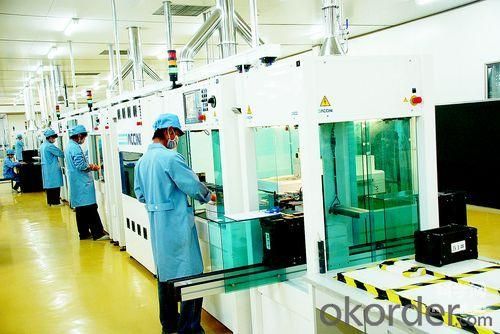
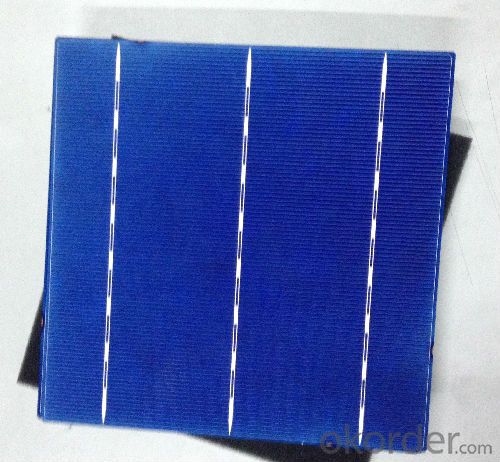
FAQ
We have organized several common questions for our clients,may help you sincerely:
What’s price per watt?
A: It’s depends on the quantity, delivery date and payment terms of the order. We can talk further about the detail price issue. Our products is high quality with lower price level.
Can you tell me the parameter of your solar cells?
We have different series of cells with different power output, both from c-si to a-si. Please take our specification sheet for your reference.
How do you pack your products?
We have rich experience on how to pack the panels to make sure the safety on shipment when it arrives at the destination.
Can you do OEM for us?
Yes, we can.
How long can we receive the product after purchase?
In the purchase of product within three working days, We will arrange the factory delivery as soon as possible. The perfect time of receiving is related to the state and position of customers. Commonly 7 to 10 working days can be served.
- Q: Can solar cells be used for powering electric vehicles charging stations?
- Yes, solar cells can be used to power electric vehicle charging stations. Solar panels can convert sunlight into electricity, which can then be used to charge electric vehicles. This helps to utilize renewable energy sources and reduce the carbon footprint associated with charging electric vehicles.
- Q: How do solar cells handle snow or ice buildup?
- Solar cells are designed to handle snow or ice buildup by being installed at an angle, which allows for the snow or ice to slide off. Additionally, the dark surface of solar cells tends to absorb sunlight and heat, which can help melt any accumulated snow or ice.
- Q: Can solar cells be used on rooftops?
- Yes, solar cells can be used on rooftops. In fact, rooftop solar panels are a popular choice for residential and commercial buildings as they provide an efficient way to harness solar energy and generate electricity.
- Q: Can solar cells be used for powering remote weather monitoring stations?
- Yes, solar cells can be effectively used for powering remote weather monitoring stations. Solar cells have the capability to convert sunlight into electrical energy, making them an ideal and sustainable power source for remote locations. They can provide a reliable and continuous power supply to weather monitoring stations, allowing them to operate independently without the need for grid connections or frequent battery replacements. Additionally, solar cells are environmentally friendly and cost-effective in the long run, making them a popular choice for powering off-grid weather monitoring stations.
- Q: How do solar cells perform in extreme temperatures?
- Solar cells generally perform less efficiently in extreme temperatures. High temperatures can cause solar cells to overheat, which can reduce their overall performance. Conversely, extremely cold temperatures can also impact their efficiency. However, solar cell manufacturers often design them to withstand a wide range of temperatures and take measures to minimize the impact of extreme temperatures on their performance.
- Q: Can solar cells be used for powering navigation buoys?
- Yes, solar cells can be used for powering navigation buoys. Solar cells are a reliable and sustainable source of energy that can generate electricity from sunlight, making them ideal for remote locations such as navigation buoys. They can effectively power the lighting and other electrical systems on the buoys, eliminating the need for traditional power sources and reducing maintenance costs.
- Q: What is the impact of saltwater exposure on solar cell efficiency?
- Saltwater exposure can have a significant negative impact on solar cell efficiency. The saltwater can corrode the metal components of the solar cells, leading to a decrease in their performance and overall efficiency. Additionally, the saltwater can create a conductive pathway that can bypass the solar cells, resulting in a loss of electrical energy. Therefore, it is crucial to protect solar cells from saltwater exposure to maintain their efficiency and prolong their lifespan.
- Q: Which Solar Panel Type is best? Polycrystalline panel or PV Module Monocrystalline Solar cell panel, or thin film?
- PV Module Monocrystalline Solar cell panels is most efficient since they are made from the highest-grade silicon.
- Q: Can solar cells generate electricity on cloudy days?
- Yes, solar cells can generate electricity on cloudy days, although the amount of electricity produced may be significantly reduced compared to sunny days.
- Q: How do solar cells compare to fossil fuels in terms of energy production?
- Solar cells have several advantages over fossil fuels in terms of energy production. Firstly, solar cells harness renewable energy from the sun, while fossil fuels are non-renewable and finite resources. Secondly, solar cells produce clean energy, emitting no greenhouse gases or pollutants, whereas fossil fuels release harmful emissions that contribute to climate change and air pollution. Additionally, solar cells can be installed on rooftops or in remote areas, making energy production more decentralized and less reliant on centralized power plants. However, solar cells currently have limitations in terms of efficiency and storage capacity, which fossil fuels have a higher energy density and can provide continuous power supply. Overall, solar cells offer a sustainable and environmentally-friendly alternative to fossil fuels, but further advancements are needed to fully replace their energy production capabilities.
Send your message to us
Stackable Solar Cells - 156*156mm Monocrystal Solar Cell with 4.65 Watt High Efficiency
- Loading Port:
- Shanghai
- Payment Terms:
- TT or LC
- Min Order Qty:
- 1000 pc
- Supply Capability:
- 20000000 pc/month
OKorder Service Pledge
OKorder Financial Service
Similar products
Hot products
Hot Searches
Related keywords
